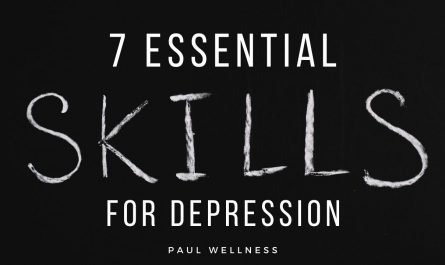Why Might Someone Avoid Getting Help for a Mental Health Concern? As an experienced mental health professional, I’ve encountered numerous individuals reluctant to seek help for their mental health concerns. This hesitation can stem from various sources, deeply rooted in personal, societal, and systemic factors. Understanding these barriers is crucial in creating supportive environments that encourage individuals to seek the help they need.
Navigating the Complex Landscape of Mental Health Stigma
One of the most significant barriers to seeking mental health help is the pervasive stigma associated with mental illness. Despite advances in mental health awareness, many still face judgment and misunderstanding when disclosing their mental health struggles. This stigma can lead to shame, fear, and ultimately silence, preventing individuals from reaching out for the support they desperately need. Overcoming this stigma requires a collective effort to normalize mental health discussions and educate the public about the reality of mental health conditions.
The Impact of Fear and Misunderstanding
Fear is a powerful deterrent. Many fear the consequences of acknowledging their mental health issues, worrying about repercussions on their employment, relationships, and social standing. Misunderstandings and myths about mental health treatment can further exacerbate this fear, leading individuals to believe that seeking help is a sign of weakness or that therapy is an invasive process that will not respect their autonomy or confidentiality. Addressing these fears involves clear communication about the confidentiality, respect, and support inherent in professional mental health care.
Accessibility and Cultural Considerations
Accessibility issues, including lack of insurance, financial resources, or available services, can significantly hinder one’s ability to seek help. Additionally, cultural barriers and lack of culturally competent care can deter individuals from different backgrounds from accessing mental health services. Recognizing and addressing these disparities is vital in creating an inclusive approach to mental health care that respects and accommodates the diverse needs of all individuals.
Relevant Links for Further Reading:
- Coping with New Job Stress
- Overcoming Perfectionism and Low Self-Esteem
- Signs Someone is Depressed
- Signs of ADHD in Adults
- ADHD and Autism in Women
Key Points Summary:
- Mental Health Stigma: Continues to be a significant barrier to seeking help, rooted in societal judgment and misunderstanding.
- Fear and Misunderstanding: Many individuals fear the repercussions of seeking help due to misconceptions about mental health care.
- Accessibility and Cultural Considerations: Challenges such as lack of resources, insurance, and culturally competent care can prevent individuals from seeking treatment.
By addressing these barriers and fostering a more supportive and understanding society, we can encourage more individuals to seek the help they need, promoting a healthier, more compassionate community.
Detailed Questions and Answers
1. How does societal stigma act as a barrier to seeking mental health help, and what can be done to reduce it?
Societal stigma surrounding mental health stems from misconceptions, lack of awareness, and historical prejudice against mental illness. This stigma can manifest as shame, embarrassment, or fear of discrimination, causing individuals to avoid seeking help to not be labeled as “weak” or “crazy.” The fear of being ostracized by peers, family, or in the workplace can be paralyzing, leading many to suffer in silence rather than face potential judgment and isolation. Stigma often exacerbates the challenges faced by those struggling with mental health issues, reinforcing a cycle of silence and suffering.
Efforts to reduce stigma should focus on education and awareness. Campaigns that highlight the prevalence of mental health issues and the normalcy of seeking help can change societal perceptions. Sharing stories from a diverse range of individuals who have experienced mental health challenges can also humanize the issue, making it more relatable and less alienating. Schools, workplaces, and media outlets play crucial roles in shaping attitudes and can contribute significantly to destigmatizing mental health concerns.
Additionally, policy changes that promote mental health awareness and protect individuals from discrimination are essential. Ensuring that mental health care is accessible and covered by insurance can help normalize treatment and make it more acceptable to seek help. By fostering a culture of understanding and acceptance, we can create an environment where individuals feel supported and encouraged to prioritize their mental wellness.
- Societal Stigma: Causes shame and fear, leading to avoidance of seeking help.
- Reducing Stigma: Requires education, awareness, and sharing personal stories.
- Policy Changes: Necessary to protect individuals and make mental health care more accessible.
2. What role does fear play in avoiding mental health treatment, and how can individuals overcome it?
Fear is a significant barrier to seeking mental health treatment. This can include fear of the unknown, fear of treatment itself, or fear of being judged by others. Many individuals worry about the implications of having a mental health diagnosis, such as the impact on their job security, relationships, and social standing. The prospect of facing one’s own vulnerabilities or changing long-standing behavioral patterns can be daunting, leading many to postpone or avoid seeking help altogether.
Overcoming this fear starts with education and understanding. Learning about mental health conditions and the treatment process can demystify the experience and alleviate concerns about the unknown. Support from loved ones, as well as hearing about others’ positive experiences with therapy, can also provide comfort and reassurance. Knowing that confidentiality is a cornerstone of mental health treatment can ease fears about privacy and judgment.
Encouragement from friends, family, or trusted healthcare professionals can be a powerful motivator to seek help. Additionally, starting with less intimidating forms of support, such as online resources or group therapy, can be a less daunting entry point into mental health care. Over time, as individuals experience the benefits of treatment, their fears may diminish, allowing for a more proactive and positive approach to their mental health.
- Role of Fear: Deters individuals from seeking treatment due to various concerns.
- Overcoming Fear: Involves education, understanding, and support from others.
- Gradual Approach: Starting with less intimidating support can help ease into treatment.
3. How do financial constraints and lack of accessibility contribute to the avoidance of mental health services?
Financial constraints and lack of accessibility are major obstacles to obtaining mental health services. The cost of therapy, medication, and other treatments can be prohibitive for many, especially those without insurance or with inadequate coverage. Furthermore, in many areas, particularly rural or underserved communities, there may be a shortage of mental health professionals, leading to long wait times and travel difficulties. These barriers can make the prospect of seeking help seem overwhelming and futile, discouraging individuals from pursuing the support they need.
Improving access to mental health services requires systemic changes, including increased funding for mental health programs, expanded insurance coverage, and incentives for mental health professionals to work in underserved areas. Teletherapy and online resources have emerged as viable alternatives, offering more accessible and affordable options for those unable to attend traditional in-person sessions. These technologies can help bridge the gap in services, although they may not be suitable for all individuals or conditions.
Community-based initiatives, such as free or low-cost clinics and mental health awareness campaigns, can also play a crucial role in making services more accessible. Public policies aimed at integrating mental health care into primary health care settings can reduce barriers and normalize the process of seeking help. By addressing financial and accessibility issues, we can move closer to a society where everyone has the opportunity to access the mental health care they need.
- Financial Constraints and Accessibility: Significant barriers to obtaining mental health services.
- Systemic Changes: Needed to improve access and affordability.
- Community Initiatives and Teletherapy: Can provide more accessible options for those in need.
4. Why might cultural and social factors deter individuals from seeking mental health services, and how can these issues be addressed?
Cultural and social factors play a significant role in shaping attitudes toward mental health and can deter individuals from seeking services. Cultural stigmas, beliefs about self-reliance, and misconceptions about mental health care can all contribute to reluctance. In some cultures, mental health issues may be viewed as a family matter, not to be discussed with outsiders, or as a personal failing rather than a treatable condition. These beliefs can prevent individuals from acknowledging their struggles and seeking help.
Addressing these cultural and social barriers requires culturally sensitive approaches to mental health care. This includes training for mental health professionals on cultural competence, the development of culturally adapted treatment models, and outreach programs that engage communities in dialogue about mental health. By respecting and incorporating cultural values and beliefs into treatment, mental health professionals can build trust and encourage more individuals to seek help.
Community leaders, influencers, and members of various cultural groups can also play a vital role in changing perceptions within their communities. By speaking openly about mental health, sharing their experiences, and endorsing mental health services, they can help break down barriers and change attitudes. Collaborative efforts between mental health professionals and community members can lead to more inclusive, effective, and accessible mental health services.
- Cultural and Social Factors: Influence perceptions and attitudes toward mental health.
- Culturally Sensitive Approaches: Necessary to address and respect diverse beliefs and values.
- Community Engagement: Essential for changing perceptions and encouraging help-seeking behavior.
5. How do personal beliefs and self-stigma contribute to the avoidance of mental health help, and what strategies can counteract these beliefs?
Personal beliefs and self-stigma can be significant barriers to seeking mental health help. Individuals may internalize societal stigmas, leading to self-judgment, shame, and a reluctance to admit they need help. Beliefs rooted in misconceptions about mental health, such as viewing mental illness as a sign of weakness or a moral failing, can prevent individuals from acknowledging their struggles and seeking assistance. This self-stigma can be deeply ingrained, making it one of the more challenging barriers to overcome.
To counteract these beliefs, public education and awareness campaigns can play a crucial role. By providing accurate information about mental health and debunking myths, we can help individuals recognize that mental health issues are common and treatable, not a sign of personal failure. Additionally, promoting stories of recovery and resilience can provide hope and reduce self-stigma, showing that seeking help is a sign of strength, not weakness.
Encouraging self-compassion and self-awareness can also be beneficial. Individuals can be guided to challenge their negative beliefs and replace them with more positive, supportive attitudes. Mental health professionals, support groups, and educational resources can all contribute to this process, helping individuals to see that their value and worth are not diminished by their mental health struggles. By addressing self-stigma and promoting a more compassionate self-view, we can empower individuals to seek the help they deserve.
- Personal Beliefs and Self-Stigma: Internalized stigmas deter individuals from seeking help.
- Public Education and Awareness: Essential for changing misconceptions and reducing self-stigma.
- Self-Compassion and Awareness: Help individuals challenge negative beliefs and embrace support.
FAQ Questions with Responses
Q1: What is mental health stigma?
A1: Mental health stigma refers to negative attitudes and beliefs that lead to discrimination against people with mental health conditions.
Q2: How can fear prevent someone from seeking mental health help?
A2: Fear can stem from concerns about judgment, misunderstanding, or consequences affecting one’s life and relationships, deterring individuals from seeking help.
Q3: What are some signs that someone might need mental health help?
A3: Signs include significant changes in behavior or mood, withdrawal from social activities, feelings of hopelessness, or thoughts of self-harm.
Q4: Why is accessibility important in mental health services?
A4: Accessibility ensures that everyone, regardless of their location or financial situation, can receive the mental health care they need.
Q5: Can cultural beliefs impact attitudes towards mental health?
A5: Yes, cultural beliefs can significantly influence how individuals perceive mental health and their willingness to seek help.
Q6: What is self-stigma?
A6: Self-stigma occurs when individuals internalize societal stigmas, leading to self-judgment and reluctance to seek help for mental health issues.
Q7: How can individuals overcome barriers to seeking mental health help?
A7: Overcoming barriers involves educating oneself, seeking support from friends or professionals, and challenging stigma and personal beliefs.
Q8: What role do healthcare professionals play in reducing mental health stigma?
A8: Healthcare professionals can reduce stigma by providing compassionate care, educating patients and the public, and advocating for mental health awareness.
Q9: How does financial strain affect access to mental health services?
A9: Financial strain can limit an individual’s ability to afford therapy, medication, or other necessary mental health services, hindering their access to care.
Q10: How can communities support individuals facing mental health challenges?
A10: Communities can support individuals by promoting mental health awareness, providing resources and support networks, and fostering an environment free from stigma.


